Staff Book Reviews
Fiction
Nonfiction

This is a highly disturbing but about a teenager that gets caught up in a sex slave ring in the Detroit suburbs. It's a very graphic depiction about the trauma she endured for 2 years, trying to protect her family. It's hard to imagine that this could happen in the American suburbs, but it does. Leaning heavily on her faith, she overcame the trauma and terrifying memories, and starts working to help other girls like her.
Not expertly written and too preachy for my taste, I was riveted and disgusted by the graphic scenes of her repeated torture. It made me angry that her parents didn't notice something was wrong, and that teachers and security officers at her school who saw what was happening didn't do anything because they were afraid of her captors. Overall, a good but highly disturbing read.
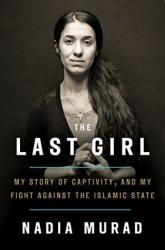
Wow. Just wow. Nadia takes us through the miasma of Iraq sects and their competing values. She also talks about the Iraq war and the birth of ISIS from the rubble of the American occupation. However, in the most intimate way, she tells us about her sect, the Yazidis and their religion, persecution, and relationship with the Islamic State. And it's here that the real story begins.
In August of 2014, Nadia's village was occupied by ISIS, ending in the genocide of her people. She and other girls we sold into slavery and were considered less than human to their captors. Nadia pulls no punches about what she endured. It's brutal. In a series of fortunate events, Nadia embarks on a dangerous escape.
Told with honesty and forthrightness, this book kept me on the edge of my seat. I was highly disturbed by the sex slave recollections, which was her intention, and fascinated by her explanation of the regions, sects, and politics of Iraq, something I knew very little about. Despite the intense subject matter, I highly recommend this book. It was fantastic.
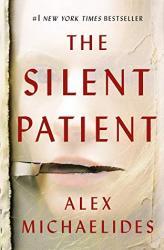
Alicia Barenson is a famous painter who shoots her husband in the face five time then stops speaking. A psychotherapist works with her to get her to speak again and becomes obsessed with her.
Maybe mystery/thrillers aren't my cup of tea? It started out very good, pulling in the reader with a fascinating story about Alicia. However, the way it played out in the end was convoluted and disappointing. I wasn't like "Oh wow! What an ending!" Instead, I was like "Huh? What the...?" If you can get over the ending, the book is a good read.

A graphic novel featuring true reports of sexual harassment and assault in its many forms. A really powerful, quick read. My only problem with it is I wish it was longer. I read it in about 30 minutes. I did like the format of graphic novel. It made it seem more lighthearted than it actually is, which further illustrates the darkness of the subject matter.

Fantastic memoir about the life and times of Michelle Obama, from her early upbringing in South Side Chicago to her time as First Lady. I loved the descriptive quality of her experiences and was amused by the meeting and falling in love with Barack. The anecdotes of life in the White House were particularly interesting. I would recommend listening to this book instead of reading it, if possible, as she is the narrator.

A Fun book about 70s rock and roll. It made me wish I could hear the songs they wrote. The author did a good job of describing the music and the volatile relationship between the two main characters. I would love for this to be a movie if it isn't already. Oh, I see it's being turned into a TV series. Cool.
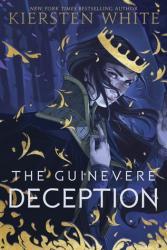
Premise: Guinevere died in the convent where she'd been sent by an her father. An imposter, Merlin's daughter and Arthur's new protector, is her replacement, and all have been fooled into thinking she's the "real" Guinevere, save Arthur, who she immediately marries and starts to protect.
I found the beginning of the book, with its delicious hints of a larger story of evil and darkness, to be captivating. Unfortunately, those hints, for the most part, stay hints, and the book ended up being a pretty predictable retelling of sorts that was paradoxically too faithful and not faithful enough to its predecessors. It had glimpses of the humor from Mallory, T. H. White and Steinbeck. It had the promise of the adventure that lies in those tales. It just never fully delivered. And the end, when it finally came, was predictable enough to be a bit disappointing.
That said, I do love Arthurian legend, and this version of Guinevere is not without promise. If the next entry gets great reviews, I'll give it a go as my familiarity with the characters and story would render a re-read unnecessary. 3 stars. I...liked it? I'll recommend it to younger readers new to the legend.
Thanks to Netgalley and Delacorte for the advance copy which I received in exchange for an unbiased review. The Guinevere Deception will be on sale on 05 November, but you can put your copy on hold today!

Eva's nameday is coming up. And on that day, she'll become a Rival Heir. From then on, she'll be expected to try to kill her sister (or die in the process), so that one of them could take the throne. Eva's always been her father's favorite, but in this matriarchal society, her mother, the Queen, who, of course favores Eva's sister Isadore, would do anything to make sure that Eva doesn't get the throne. Including helping Isa with her magic while trying to keep Eva from accessing hers. But the throne is Eva's destiny. It's that, or death.
This was another instance of the plot being hard to describe, though that's mostly due to the fact that there are so many things happening in this book. It's pretty complicated. Not in a bad way - I really enjoyed it. The worldbuilding was very cool, I loved the khimaer. A lot of it was new to me, or a fun twist on a familiar concept. I loved the book's mythology. Something about it felt fresh. I also bizarrely really liked the middle part of the book - its full of layered mysteries, court intrigue, training montages and the right amount and type of romance. It's built on mutual and earned respect (and yes, hotness). There's a lot to like in this book, and it won't be the last by this author that I read.
That said, the beginning and ending were rote and felt a bit weak. The end, in particular, felt like it existed only to get you to read the next installment. There was no resolution, and it felt very rushed, especially after a story that was otherwise taking its time unfolding. I don't want to spend a lot of time criticizing what was otherwise a fun read - give it a go!
TLDR: This was so close to being really good, but it just missed the mark (rote beginning and ending, super strong middle and worldbuilding). I quite enjoyed it, nonetheless. 3.5 stars - I almost really liked it. :)
Thanks for the eARC Netgalley and Putnam for the advance copy! A River of Royal Blood will be available for purchase on 29 October, but you can put your copy on hold today.

Onyii and Ify live as sisters in an all-girls refugee/war camp on the edge of the Redlands, an area riddled with radiation from a long-ago nuclear disaster. Nigeria, their home, is in the midst of a civil war. Children are conscripted as soldiers and pilots for mechanized warrior robots. Onyii and Ify are separated, and as truths are revealed to each of them, they must decide where, and with whom, their loyalties lie all while trying not to die a terrible death in a bloody civil war.
Going into this, I knew nothing about the Nigeria - Biafran civil war of the 1960s, which is at the heart of this novel. Personally, I enjoy learning about parts of history that I know nothing about (I typically don’t gravitate to one of the 1,983,784,767 WWII novels, for example), and I really enjoyed the unique setting. The book is set in the future, and the futuristic elements really added a lot to the plot and were well employed by the author. Onyii, for example, is an Augment, meaning that she’s a little bit of a bionic woman. While I didn’t really relate to the main characters, I did really like them. They didn’t always make the best decisions, but their decisions made sense to their characters and their respective arcs. They were easy to root for. Really, my only complaint was that it felt overlong, and I skimmed through some of the battle scenes, but that’s more a matter of personal preference.
TLDR: Looking for something to read after Children of Blood and Bone? You’ve found your next great Nigerian inspired read! (And, honestly, if you haven’t read Children of Blood and Bone but it’s on your TBR, I’d suggest replacing it with War Girls, which is a much more original, engaging book). For readers who like apocalyptic novels and futuristic sci-fi battles. 4 stars.
Thanks to Netgalley and Razorbill for the eARC which I received in exchange for an honest review. War Girls will be available for purchase on 15 October, but you can put your copy on hold today!
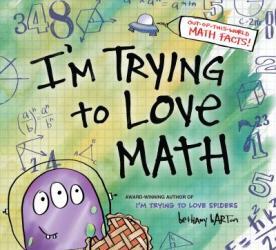
Using abundant humor, Bethany Barton makes this book about math interesting to all. Her facts and explanations show how math is used in our everyday lives and why it’s important. Math is used all around the world and even in space. We used math when we bake cookies, make music, and explore. It’s part of many of the patterns we see in nature. Since math is part of so many of the things you already love, you may just already love math.

There’s nothing magical about these experiments – just everyday science. Experiment with raisins, sugar cubes, eggs, and more. You can just use simple materials that you already have around the house to test things out and learn something too.
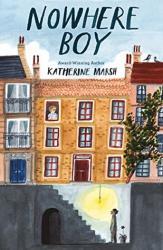
Fantastic! Ahmed is a 14 year old Syrian refugee that has been orphaned and left with no money and no place to go. He ends up in Brussels and hides in the wine cellar of a house. Max, whose family lives in the house, discovers him and they strike up a friendship. What follows is a story of loyalty, determination, and desperation. The ending almost made me cry. The book brings up questions about whether or not countries should accept refugees and how to determine who is good and who is a terrorist. I definitely recommend it to everyone, as the plight of middle eastern refugees should be known to all.
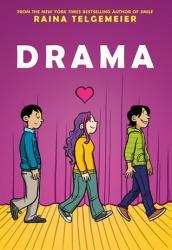
This was a very sweet book. The three things I liked best about it were the following:
1. It was a play within a play.
2. A character breaks up with his girlfriend because she was trying to get someone to cheat on a test.
3. The main character doesn't give a second chance to the boy who disrespected her.
It's a lighthearted book that addresses some deep themes and is fun to read.

Surprisingly good. I was expecting more of a lighthearted chick lit experience, but it was a compelling read that delved into the lives to two sisters over a period of time. I'm not sure what the title has to do with the story but still a very powerful story.
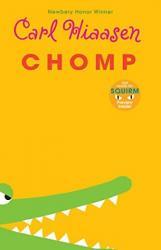
Mickey Cray and his son Wahoo are hired to wrangle various creatures for a survival tv show. Throw in a bat *bleep* crazy leading man along with various and sundry everglades characters and hilarity ensues. Such a fun read! Well, I actually listened to it, but I was still highly entertained.
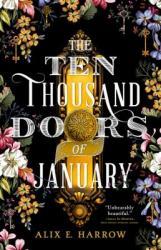
This beautiful work of art, is a love letter to stories and bibliophile’s everywhere. I loved Harrow’s intoxicating magical debut so much that I blew through it in 4 days! I read it back in March but it still sticks with me to this day! But I have to admit, I have been a hard time finding words to describe this magical beautiful experience of a book because it grabbed my heart so completely and did so much to me, that to try to express it in words and to remember all the intricate details has been difficult. But I am happy to report I am currently doing a re reading and so far it is just as magical, heartbreakingly tender and beautiful as the first time. I am so excited that it has finally come out and more people get to experience this epic journey into unknown worlds. This should be on everyone’s reading lists!
Meet January Scaller, a brown girl, an in between sort of thing some call her, growing up in the 1900’s a time rife with social change, and colonialism. A difficult time where the world is in transition and nothing is at it seems. January is the ward of a wealthy white benefactor, Mr. Locke, who spends his waking moments hunting for the worlds artifacts and then selling them to the highest bidder. Or more truthfully, employing people like January’s father to hunt down these treasures, so he can sell them. As a result, his sprawling estate resembles a museum decorated with treasures and all sort of odd things from around the world. Being taught to always be the good girl, she is tollerated in Mr Locke’s society but still she feels like a artifact herself.
With her father gone for months at a time and Mr. Locke attending to meetings, January grows up alone, content with wandering the lonely grounds and halls to be among it’s treasures and discover its secrets. One day when she was 7, playing amidst the wide open fields of the estate, she discovered a door, a blue ragedy door that hadn’t looked like it had been used in ages, and she wished for it to lead to elsewhere, using a old diary she had found. Next thing she new, she was stepping from the familiar into a new world unknown. When she was was older, in the same place she found the diary, she discovered a mysterious book that spoke of secret doors, other worlds, and adventure. As the pages keep turning January discovers connections and truths to her own story, that she never would have imagined and is led into a adventure of a lifetime.
Full of beautiful imagery and entrancing atmospheric prose, this story exhibits the best things I love about books and fantasy in general. Prose that flower off the page and into the reader’s imagination, a coming of age tale, a magic system based in words and stories, other lands, a wild, beautiful, strong heroine who has trouble fitting in and conforming to standards, dastardly villains, sweet friendships, and a heart of love and family at it’s center.
Stories have a way of communicating deeper truths that can’t be understood and communicated in any other way. And their is so much in this book! A imaginative tender hearted lonely adventuresome girl full of all the desires that young girls have, the yearning to be loved both romantically and by a father, and the desire to be part of a grand adventure in unknown new exciting places. This story communicates hope for better things and the understanding that their is something more. It communicates love and the need for family and belonging, it communicates the importance of discovering identity and sticking to your truths no matter what. And it communicates so many other truths that are at once both universal but at the same time, personal as stories speak to each of us differently and discovering what they say, is part of the adventure.
And everyone should go on this adventure! Everyone should read this intricate, tender hearted, complex, magical, tale that will sweep your heart between it’s pages and not let it go, even after the last page is turned.
Thank you to Orbit publisher for my ARC of this wonderful tale for review!
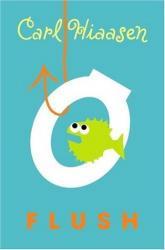
Noah's dad is in jail for sinking the Coral Queen, a gambling boat that dumps raw sewage into the pristine water of the Florida keys. A fun adventure, Hiassen delivers yet again. So far he has done no wrong. I listened to this on cd and was not impressed by the narrator, but Zoe loved the parts she heard and wants to read it now. If that's not a tribute to the book, than I don't know what is.

Peter, Susan, Edmund, and Lucy are drawn back into Narnia 1,300 years in the future to help Prince Caspian defeat a terrible king and gain the throne.
This book was not nearly as good as The Lion, The Witch and the Wardrobe. I listened to it on audio and while the narrator was good (Vanessa Regrave), the story left something to be desired. I know Prince Caspian is young, but he sounded like a whiny child to me. Over all, it was pretty good, but not great.
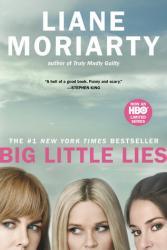
When a bullying issue arises in Kindergarten, several mothers duke it out on the elementary schoolyard. As we glimpse into the world of the three main mothers we see heart-wrenching elements unfold.
I didn't expect to get much out of this book. In fact, I thought it would be snarky and contrived. After all, the title smacks of drama. But I enjoyed it thoroughly, drama and all. I hadn't read the summary and didn't have any idea as to what would happen next. It was fun and powerful at the same time.
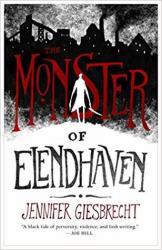
The Monster of Elendhaven follows two characters – Johann, the eponymous monster, and Florian, a mage that ultimately forces him to do his bidding. Mages are forbidden to exist in Elendhaven, and the locals in power kill Florian’s family, so Florian is out for revenge. And he’ll use Johann to ensure he gets it.
It’s rare that I wish a book was longer, but that’s definitely the case here. The worldbuilding was spectacular, as was the prose, but the plot was pretty basic, and the end jarring. I could have spent much longer in this dark, twisted world with our dark, twisted characters. I kept thinking of Patrick Suskind’s book, Perfume: A Story of a Murderer, as both of our characters were somewhat similar to the protagonist of that book. There’s a romance that I wouldn’t have minded so much, but again, it wasn’t given time to breathe in this short little novel.
TLDR: This book is nasty in that deliciously evil sort of way. If that’s your thing, you’ll love it. I wish it were a bit longer.
3.5 stars. Thanks to NetGalley and Tor for the eARC, which I received in exchange for an unbiased review.

Tess is a time traveling member of the Daughters of Harriet, a group that does it's best to make their present time, 2022, a safe place for women, whether cis or trans. There's a men's right's activist group from further in the future trying to undermine their efforts by erasing the Daughters of Harriet and women's rights folks from the timeline. Meanwhile, in 1992, teenager Beth, a friend from Tess' past, finds herself in a bit of a pickle. She and her friends kill a boy who was in the process of sexually assaulting their friend. This starts the girls down a murderous path that Tess will do her best to stop.
For the most part, I enjoyed this book. I usually enjoy time travel, unless its being used as a cheap plot device which was definitely not the case here. Newitz did a lot of homework for this one - the historical notes at the end were really interesting and trips to the past often include historical figures. The story alternates between Tess and Beth with a few other perspectives thrown in on occasion. Tess mainly splits her time between the late 1800s (easily my favorite parts), the early 1990s and her present in 2022, while Beth's story is firmly situated in 1992. While I enjoyed both stories, I never really felt compelled to read the book. Both perspectives were interesting, but not captivating or thought-provoking (though I suspect the book will provide plenty of thinking material for some readers). As a result, certain plot points felt unnecessary and the book felt overlong. I really hated the way Tess' story ended. Nonetheless, its an enjoyable read that makes a great point (women are people too, who knew?) that I would recommend to science fiction readers that are interested in women, women's and LGBT rights. There's also quite a bit of 90's punk rock that readers of a certain age will love. The ending is also quite optimistic, which I wasn't expecting, but did welcome.
TLDR: The Future of Another Timeline is interesting book full of time travel shenanigans that is plagued by the same issues that all time travel book face. Ultimately, while the book was fun, feminist and full of salient social commentary, it wasn't compelling.
3 stars - I liked it.
Thanks to Netgalley and Tor for the advance copy which I received in exchange for an unbiased review. The Future of Another Timeline will be available for purchase on 24 September, but you can put your copy on hold today!
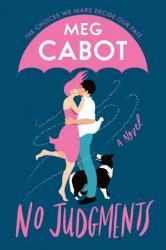
First, before I go any further with this review, if you are ordered to evacuate, for goodness sake, EVACUATE. Doing anything else is putting not just your life at risk, but those of the emergency responders as well. It’s just not ok.
Alrighty then, I’m going to hop off my soapbox.
After the death of her father, an assault, and a bad breakup, Bree has decided to flee New York in search of warmer, more gentle climes…and people. As a current resident of Little Bridge Island (a small key in FL), she’s not excited when the first hurricane she experiences is a Category 5. She decides to stick it out in Little Bridge with her employers, the Hartwells and their hot-if-unavailable playboy son, Drew. No Judgements follows Bree’s exploits before, during and after the hurricane.
Meg Cabot’s books are always hit-or-miss for me, and unfortunately, this one was the latter. There were a few things that were approached in a completely inappropriate way. For example, our heroine deciding not to leave Little Bridge even though literally everyone she knows is begging her to evacuate, she has no experience with hurricanes, and she lives in an apartment that’s only eight feet above sea level. There’s also some insane gun usage later in the book, and a grown adult solves an issue with his fists and is lionized for it. No no no no no. The book, being a romantic comedy, has some fun romantic moments, but a lot of the comedy felt, again, borderline inappropriate to me. Hopefully some of those jokes are removed before the book is published.
Why is the protagonist 25? This book would’ve been much more interesting if it were about an older protagonist, and this woman, to me, did not act like most 25 year olds that I know. She acted like she was a teenager, and not a very smart or mature one at that (see above examples). Romantic comedies featuring twenty-somethings are a dime-a-dozen. I wish Cabot had taken a risk here. The male lead is not any better. He likes animals and is hot, and we don’t learn much else about him. They do fall in love instantly, though, so…yay?
As someone who grew up in a hurricane affected area, I think the idea of a romantic comedy centered around a hurricane is a fabulous idea. I just wish the execution had been less offensive. I did like the pet-rescue sub-plot, though.
Even though I didn’t enjoy this book, I’ll still check out Meg Cabot’s next one and keep recommending those books of hers that I do like (for instance, Insatiable or Queen of Babble). I mean, I read this book in a day, so that says something, right? I think plenty of readers will enjoy it. For me, though, it was a 1 star read: I didn’t like it.
Thanks to Netgalley and Harper Collins for the electronic advance copy, which I received in exchange for an unbiased review. No Judgements will be released on 24 September, but you can put your copy of the book on hold today!
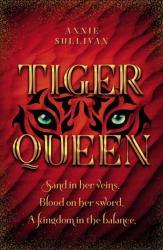
When I saw that there was a retelling of Frank Stockton’s “The Lady or the Tiger”, I got excited. I remember reading and loving that story in school, but I wondered how such a short tale could be retold. Stockton’s story serves more as a jumping off point (never fear, though – the choice between lady and tiger is made and we get to see the fallout). We open the book in the arena of drying up desert kingdom where “supplies or tiger” is used as a common way of determining justice or punishment, but of course, our king cheats to ensure justice is actually served. As resources get lower and the proletariat gets more uprisey, its up to our main character, Princess Kateri, to save the kingdom.
The plot in this is fairly standard. If you are a regular reader of YA fantasy, you’ll know where the book is headed a few chapters in. The characters themselves are nothing special, although the author transforms Kateri in a believable way. You’ll hate her at the start and root for her at the end. I wish the Desert Boys had been Desert People – why no girls? Since Kateri is such a strong hero, I thought the complete and almost total lack of lady fighters was suspect. I also wanted more tigers (if you don’t like to read about animal cruelty, maybe skip this one). It’s based on a story called “The Lady or the Tiger” – give me ladies and tigers!
There’s clearly a lot not to like, but the some of the worldbuilding was spectacular. Sullivan builds a desert world complete with lethal creatures (watch out for those sand snakes!), interesting cuisine (make sure you eat the right lizard tongue) and well, ok, I mostly liked the animals she invented. I wasn’t compelled to read the book, as, like I said its pretty obvious as to where it was going, but the worldbuilding was enough to keep me at least somewhat engaged and the author gets points for writing a standalone. I can easily see this book being dragged out to a duology and I’m glad everyone involved resisted that temptation.
TLDR: The book had potential for days, but I found the execution to be a bit lacking. Fun worldbuilding details make what is otherwise a rather routine YA fantasy more interesting. 2.5 stars rounded up to 3.
Thanks to Blink and Netgalley for the eARC, which I received in exchange for an unbiased review. The Tiger Queen will be released on 10 September, but you can put your copy on hold today!
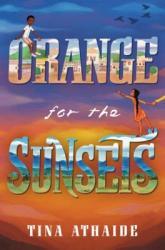
Tina Athaide’s debut novel, Orange for the Sunsets, is a story of friendship, resilience, and perseverance. Written for the middle grades and set in 1972, Athaide helps readers examine who and what they call home. It’s the story of Ugandan best friends, Asha and Yesopu, who don’t see their differences until Ugandan President Idi Amin announces that Indians have 90 days to leave the country. Asha, an Indian, and Yesopu, an African, are torn apart. Journey with them as they learn that letting each other go may be the bravest thing that they can do.
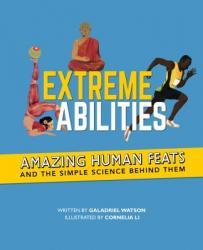
Read this book to learn about the science behind a variety of amazing feats! Do you want to learn about super strength? What about speed demons? These abilities and many more, and showcased and explained in this book. You’ll be astounded and learn something too. You can also test your abilities on some of these feats.

Check out the amazing experiments in Experiments with Movement by Anna Claybourne. You’ll learn to use everyday materials to make things fly and zoom! You’ll learn the basics of how things move, the basics of vehicle transportation. You’ll also be environmentally friendly as you reuse and recycle materials. Will you make a balloon-powered car, an air-powered rocket, or maybe an air blaster? Check out this book and get started!
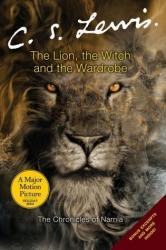
I listened to this on CD. The narrator was fantastic. The book was also fantastic. Well written, aimed at younger readers, but still enjoyable by adults. There's a reason why this book is a classic. The story had me thinking about bravery and forgiveness, but the Edmund story line was a bit frustrating. His siblings were kinder than I would've been, although I have to remember that he was just a child. All in all, a must-read, or listen.
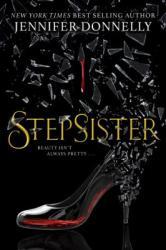
I love well-done fairy-tale retellings and there has been a brash of good ones coming out lately. This one is wildly imaginative mash up of the fairy tale Cinderella. I loved this lush atmospheric feminine take on this classic story.
Beginning at the end of the tale we all know; Ella has just gone off with her prince to become the queen of France and start her beautiful life. And Isabelle and her sister Tavi are left behind with their harsh, overbearing mother. Having done the unthinkable and mutilated themselves for a chance at fortune and a good marriage, both Isabelle and her sister are all but shunned from the town they live in. Shortly after, a mysterious fire brings down their home and they are all left destitute. As a last resort the sisters turn to a difficult neighbor whom they barter with to allow them to stay in exchange for working on their farm. They lead a harsh life and though Isabelle wants to better herself, she soon loses all confidence in herself.
Called ugly by everyone around them Isabelle starts to believe it, until she meets a curious character who gives her the chance to change her story. Unbeknownst to her, two other forces, are also fighting for her fate, one for it the other against. Who will win? Only Isabelle can determine that.
This cleverly retold fairy tale brings a fresh take to a very old myth. It is a story of one girl’s journey of self-discovery but also a strong statement on one’s ability to determine their own course instead of following the path that society has laid out for them. Once she discovers she can control her own path, Isabelle’s intense desire to change and find redemption, coupled with her strong will, and feisty attitude develops her character in such a meaningful and real way. We all fight against stereotypes “she’s too fat” “he’s got a disability” “she’s ugly” etc.” If you’re not beautiful and perfect and an idealized version of what the world deems attractive or good, or beautiful, in other words if your different, the world will push back and fight against you. This beautiful tale reminds us that when the world pushes against you, you have the strength and the ability and the write to push back and fight against it.
Set against a backdrop of a classic story. With strong heroines, the added change of Fate and Chance as characters which I think is a awesome detail, beautiful worldbuilding and lush prose! This is feminism at its finest! Thank you to the publisher Scholastic Press and Edelweiss for my ARC for review!
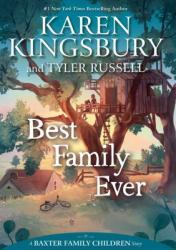
Well-known author, Karen Kingsbury, has partnered with her son, Tyler Russell to write the first book in a children’s series about the Baxter children. While millions of adult readers have read the stories of the Baxter family, this chapter book tells the stories of the children’s growing up years. There is Brooke - the perfect oldest child, Kari – an amazing soccer player, Ashley – an aspiring artist who is free and uninhibited, Erin, and Luke. This is the story of their strong Christian faith and their family loyalty.
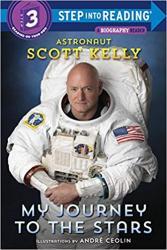
This Biography Reader tells us the story of Scott Kelly, one of the two brothers that have flown in space for NASA. He tells stories of growing up and how problems and experiences in his youth prepared him for his travels into space. He tells us about his year at the International Space Station including how he lived and the work he did. Be prepared to be inspired to reach for your own dreams!